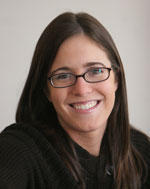Twenty Something / Christina Capecchi
Door-to-door seminarian finding new roads
 Going door to door to tell strangers about Catholicism and his plan to become a priest had to be the most daunting assignment Neil Bakker had ever received.
Going door to door to tell strangers about Catholicism and his plan to become a priest had to be the most daunting assignment Neil Bakker had ever received.
The 34-year-old from Austin, Minn., had never done anything like it—never gone door to door to sell coupon books or magazine subscriptions, let alone the Catholic Church. Before he entered the seminary, the self-described introvert had worked in information technology.
Yet there he was, a broad-shouldered 6-foot-6-inch man with a youthful face and a neatly trimmed goatee, staring down a long block, sweating in the summer heat and feeling totally unprepared. It was Neil’s first week participating in “Evangelization in Action,” a new program of The Saint Paul Seminary School of Divinity in St. Paul, Minn., that enlists seminarians to study evangelization in the morning and practice it by evening. Neil and two other seminarians were asked to pound the pavement around a small parish in an old suburb, and they started on an adjacent street to the east.
The men took turns leading the conversation, a role that fell to Neil when they approached a red two-story house on the corner. A brunette baby boomer appeared, staying behind the screen door as she sized up the seminarians. She had been a member of the parish but was no longer Catholic, she said.
It almost sounded like a case-closed comment, but there was something in her voice that lacked finality. Neil stumbled through the script he’d been running in his mind until she interjected, signaling to the kitchen where she’d been making dinner.
“I’m forcing this,” he thought. He decided to ditch the script, look her in the eyes and ask why she’d left the Church.
The question hung in the air a moment—honest, earnest. Decades ago, the parish priest had made a comment she found offensive. It compelled her to leave the Church.
“No one ever called,” she told Neil. “I just disappeared, and they didn’t care.”
She kept talking, Neil kept listening, and then she opened the screen door and stepped outside. Standing on the front stoop with Neil on the walkway below her, the two were eye level.
“I found the best thing I could do,” Neil told me, “was apologize and say, ‘I’m sorry that the priest said what he said. I’ll learn his lesson for him.’ ”
Those simple words unlocked her. To know her wounds were recognized and would go toward a future good was powerful. A wrong, at last, had been righted.
The conversation continued for half an hour. She’d been attending a Methodist church, but when they got to discussing the Catholic sacraments, Neil sensed a yearning in her, a wistfulness.
“God loves you,” he told her, “and he’s always inviting you back into his Church.”
The woman didn’t reclaim Catholicism on the spot, but Neil imagines that she feels less hurt when she looks out her back window at the steeple and bell that once drew her in. He prays for her often. The rest he leaves to God.
One in three Americans raised Catholic leaves the Church. Neil wants to invite them back and help with the healing. He is challenged by Pope Francis’ call to action issued in his recent interview with Jesuit publications.
“Instead of being just a Church that welcomes and receives by keeping the doors open, let us try also to be a Church that finds new roads, that is able to step outside itself and go to those who do not attend Mass, to those who have quit or are indifferent,” Pope Francis said. “The ones who quit sometimes do it for reasons that, if properly understood and assessed, can lead to a return. But that takes audacity and courage.”
(Christina Capecchi is a freelance writer from Inver Grove Heights, Minn. She can be reached at www.ReadChristina.com.) †
 Going door to door to tell strangers about Catholicism and his plan to become a priest had to be the most daunting assignment Neil Bakker had ever received.
Going door to door to tell strangers about Catholicism and his plan to become a priest had to be the most daunting assignment Neil Bakker had ever received.